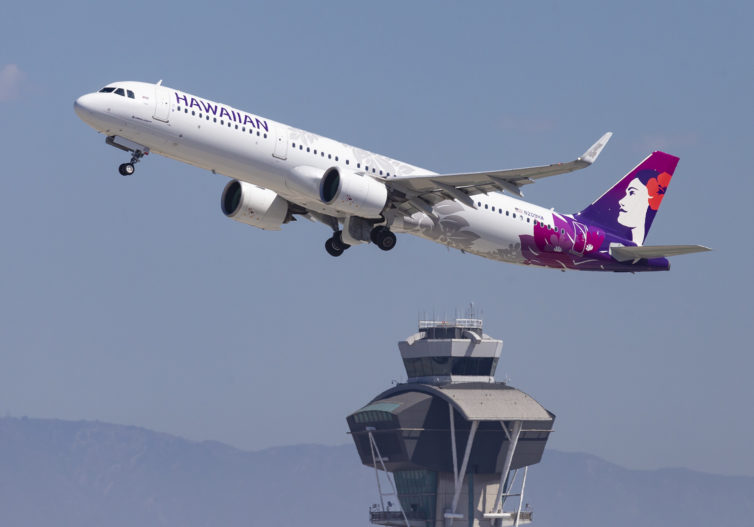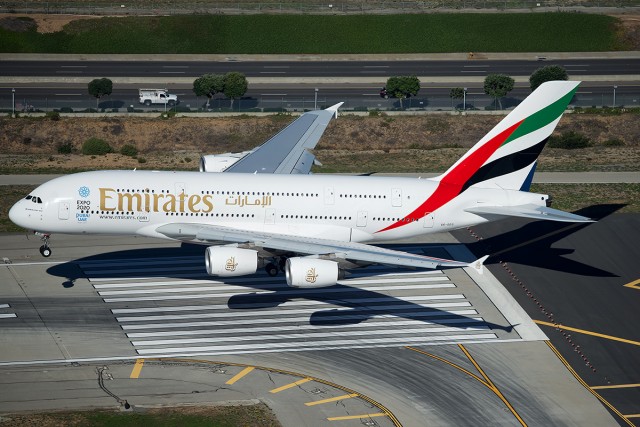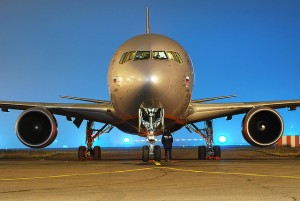
Hawaiian’s A321neos have been grounded by COVID-19; this aircraft is seen departing LAX in September 2019 – Photo: Nick Benson
For those following the impacts of COVID-19 on American aviation closely, it’s been an exhausting couple of months. Airlines have been hemorrhaging money, arguing for CARES Act exemptions from a fairly-inflexible DOT, and reducing their employment obligations to tens of thousands of employees. The full impact of the crisis on aviation, and the economy at large, still isn’t known.
The airlines have been reacting to the decreased demand for passenger flights by operating fewer flights with fewer aircraft. Being the avgeek I am, I was interested to see the evolution of each airline’s fleet as it reacted to COVID-19 – which types are getting hit hardest? Do airlines have a preference for newer, more efficient equipment, despite decreased fuel costs? There has been some coverage of the overall number of flights getting operated, pre-crisis vs. post-crisis scheduling, but I was interested to see how many aircraft each airline was actually operating.
The charts that follow show the total number of unique aircraft that flew for each airline, by type, each week from 30 December 2018 through 26 April 2020. This includes all flights that were detected, primarily derived by ADS-B reports, to JetTip’s data provider, including ferry, maintenance, cargo, etc. In other words, not all of these flights were necessarily revenue passenger flights – several carriers are doing cargo-only flights with their heavies now, and some flights are being operated to keep up with maintenance requirements.

An Emirates A380 landing at Los Angeles Airport – Photo: Bernie Leighton | AirlineReporter
It’s no secret that Malaysia Airlines had a terrible 2014. So terrible that the fate of the airline hangs in the balance. The government, tired of writing blank checks to keep the airline afloat, has demanded restructuring. Hiring Christoph Mueller (of Aer Lingus hatchet-man fame), they were, finally, not going to pull any punches.
Part of this is an impressive (rumored) fleet disposition. Winding down of the entire 777 fleet by the end of next year, complete dissolving of MASkargo, and the biggest elephant in the room of all; removal of their A380s.
Can becoming a regional airline centered around the A330 save Malaysia Airlines? I’m not hopeful, but that’s not what I am here to talk about today.
I want to discuss where the planes are likely to go.

Great head-on shot of Aeroflot Boeing 767
Russian prime minister, Vladimir Putin isn’t happy that Russia’s national carrier, Aeroflot, is not purchasing domestically-built aircraft. Putin feels it is, “unacceptable,” for Russia’s flag carrier to not be supporting Russian airplane manufactures.
About a year ago, I wrote how Aeroflot was to sell all their TU-154’s and replace them with new Boeing and Airbus aircraft. At the time Aeroflot’s chief executive, Vitaly Savelyev, stated he wanted to get more efficient planes to save on costs and jobs.
Aeroflot is currently in the process of taking over management of six other Russian airlines that aircraft are very outdated. Putin is strongly urging Savelvev to look at Russian aircraft options. Currently Aeroflot’s fleet only have six Russian-built aircraft, all Ilyushin IL-96’s. The rest of their fleet consists of 11 Boeing 767’s, 10 Airbus A330’s and 64 Airbus A320’s.
Aeroflot is looking to purchase Sukhoi Superjets, Antonov An-148’s and United Aircraft MS-21’s. The problem is only the An-148 is currently flying and is a small aircraft only holding up to 100 passengers.
I can see both sides to this argument. Putin is mostly concerned about national pride and providing Russian jobs and Savelyev wants to build a profitable airline. It will be interesting to see how Aeroflot grows with additional mergers and pressure to buy domestic products.
Source: Air Transport Intelligence news Image: Aleksander Markin
http://www.flickr.com/photos/33104187@N04/3132978183/sizes/z/in/photostream/


